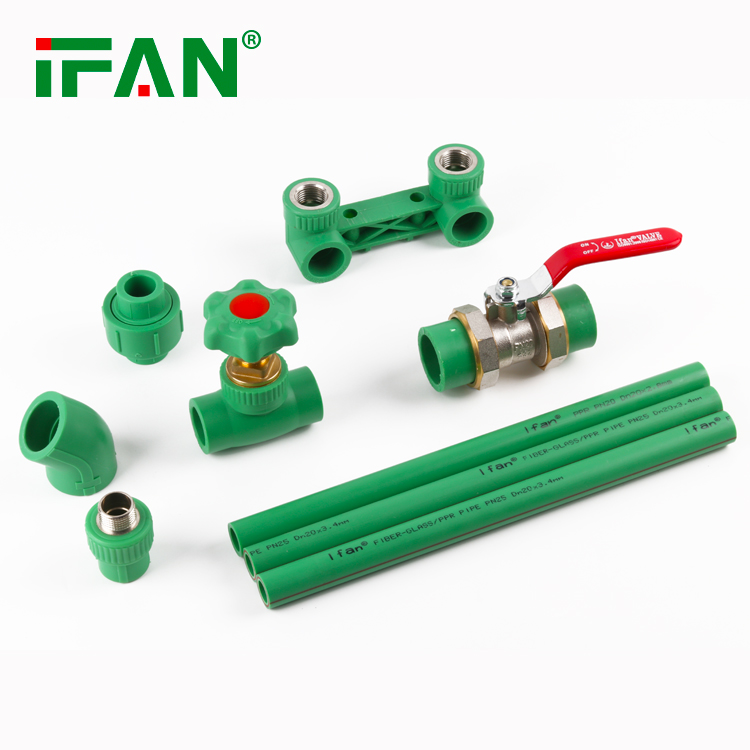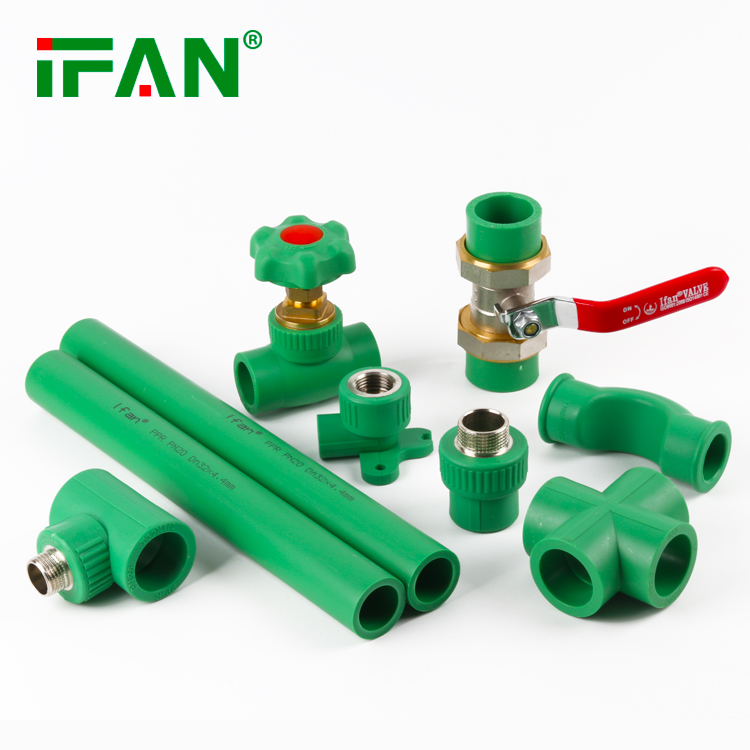O que são conexões PPR: uma introdução abrangente
As conexões PPR (Polypropylene Random) são componentes essenciais utilizados em sistemas hidráulicos. Feitos de materiais duráveis e de alta qualidade, esses acessórios fornecem conexões seguras e distribuição eficiente de água. Vamos nos aprofundar nos vários tipos de encaixes PPR e suas funcionalidades.
Tipos de Conexões PPR
Acoplamentos PPR: Os acoplamentos são usados para conectar dois tubos PPR do mesmo diâmetro, garantindo uma junta à prova de vazamento. Esses acessórios proporcionam uma conexão confiável e segura, evitando o desperdício de água e promovendo o uso eficiente da água.
Cotovelos PPR: Os cotovelos são projetados para mudar a direção dos tubos PPR. Disponíveis em diferentes ângulos, esses encaixes permitem a navegação suave de cantos e obstáculos, garantindo o fluxo ideal de água sem comprometer a eficiência.
Tees PPR: Tees permitem conexões ramificadas em sistemas hidráulicos, integrando três tubos PPR em ângulos retos. Esses acessórios facilitam a distribuição eficiente de água e são comumente usados em layouts complexos de encanamento.
Redutores PPR: Os redutores fornecem uma transição perfeita entre tubos PPR de diferentes diâmetros. Ao garantir o transporte eficiente de fluidos, esses acessórios promovem a conservação da água e apoiam práticas sustentáveis de gestão da água.
Tampas e Plugues PPR: Tampas e plugues são usados para selar as extremidades dos tubos PPR, evitando o vazamento de água e mantendo a integridade do sistema de encanamento. Esses acessórios desempenham um papel crucial na conservação da água, reduzindo o desperdício.
Válvulas PPR: As válvulas permitem o controle sobre o fluxo e a pressão da água em sistemas de encanamento. Com a capacidade de regular o uso de água de forma eficiente, esses acessórios minimizam o consumo desnecessário de água e contribuem para a conservação sustentável da água.

Functionality and Benefits of PPR Fittings
- Durability: PPR fittings are known for their exceptional durability and long service life. These fittings can withstand high temperatures, pressure, and various environmental conditions, reducing the need for frequent replacements.
- Chemical Resistance: PPR fittings exhibit excellent resistance to chemicals, making them ideal for plumbing applications where corrosion or chemical reactions may occur. This ensures the longevity and reliability of the plumbing system.
- Leak-proof Joints: PPR fittings are designed to provide secure and leak-proof connections, minimizing water wastage and preventing damage to the surrounding structures. This promotes efficient water usage and reduces maintenance costs.
- Easy Installation: PPR fittings are lightweight and easy to install, simplifying the plumbing system setup process. The fittings can be easily connected using heat fusion or mechanical joints, saving time and labor during installation.
- Low Maintenance: PPR fittings require minimal maintenance, thanks to their durability and resistance to corrosion. This reduces the need for frequent interventions and repairs, resulting in cost savings and resource conservation.
- Hygienic and Non-toxic: PPR fittings are non-toxic and do not release harmful substances into the water supply. They are also resistant to bacterial growth, ensuring clean and safe water for consumption.
- Versatility: PPR fittings are suitable for various applications, including residential, commercial, and industrial plumbing systems. They can handle both cold and hot water, making them versatile and adaptable to different requirements.
In summary, PPR fittings are indispensable components in plumbing systems that provide secure connections, efficient water distribution, and long-lasting performance. With various types available, such as couplings, elbows, tees, reducers, caps, plugs, and valves, PPR fittings offer durability, chemical resistance, leak-proof joints, ease of installation, low maintenance, and versatility. These fittings support sustainable water management practices, promote water conservation, and contribute to the overall efficiency and reliability of plumbing systems.

